Episode 152 Show Notes
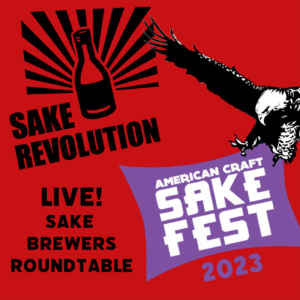 Episode 152. This week, we take Sake Revolution on the road! John and Timothy recently attended the 3rd annual American Craft Sake Festival in Charlottesville, VA. Sake Revolution hosted a live podcast recording of a “brewers roundtable” on stage in front of an enthusiastic crowd of sake lovers at the Festival. We were lucky enough to interview Blake Richardson from Moto-i in Minneapolis MN and Todd Bellomy from Farthest Star Brewery in Boston, MA. It was our first time recording in front of an audience, so you may notice some differences in our audio along with some background noise, but it was worth it to be able to connect with many fantastic U.S. Sake Brewers and sake fans all in one place. Special thanks to SBANA, the Sake Brewers Association of North America, for organizing the festival and to North American Sake Brewery for hosting the event location. In addition to our roundtable with Todd and Blake, we recorded many other interviews at the festival, so look for them in coming weeks!
Episode 152. This week, we take Sake Revolution on the road! John and Timothy recently attended the 3rd annual American Craft Sake Festival in Charlottesville, VA. Sake Revolution hosted a live podcast recording of a “brewers roundtable” on stage in front of an enthusiastic crowd of sake lovers at the Festival. We were lucky enough to interview Blake Richardson from Moto-i in Minneapolis MN and Todd Bellomy from Farthest Star Brewery in Boston, MA. It was our first time recording in front of an audience, so you may notice some differences in our audio along with some background noise, but it was worth it to be able to connect with many fantastic U.S. Sake Brewers and sake fans all in one place. Special thanks to SBANA, the Sake Brewers Association of North America, for organizing the festival and to North American Sake Brewery for hosting the event location. In addition to our roundtable with Todd and Blake, we recorded many other interviews at the festival, so look for them in coming weeks!
#SakeRevolution
Skip to: 00:19 Hosts Welcome and Introduction
Welcome to the show from John and Timothy
Skip to: 01:17 American Craft Sake Fest: Brewers Roundtable
Recording Live at the American Craft Sake Festival
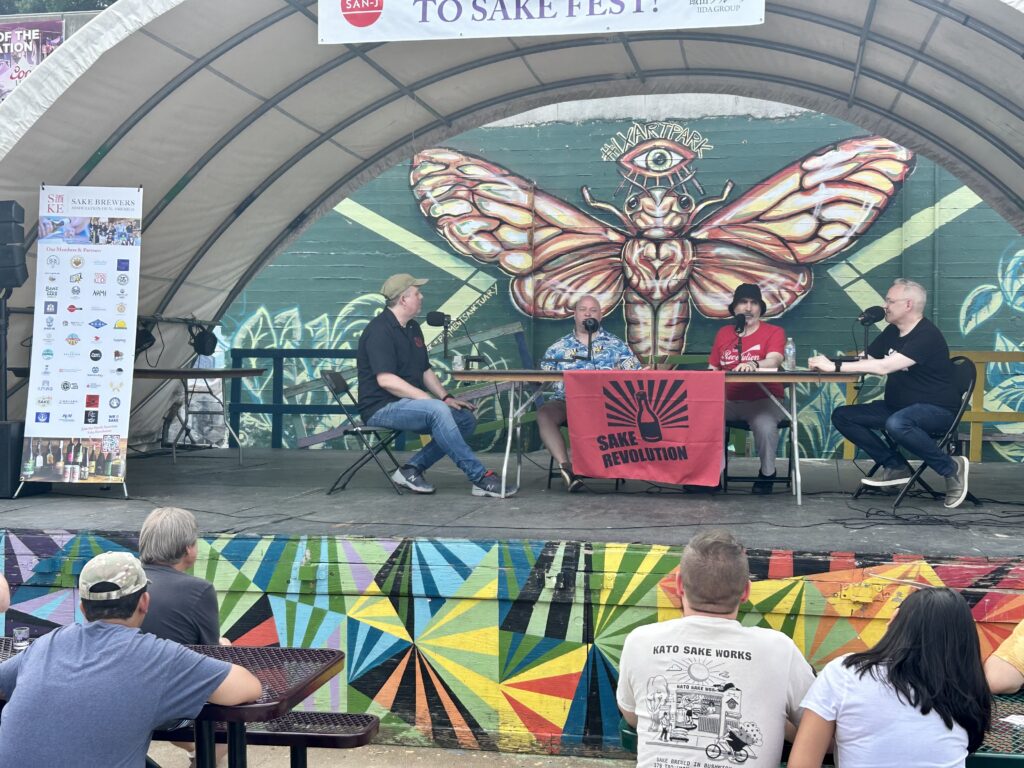
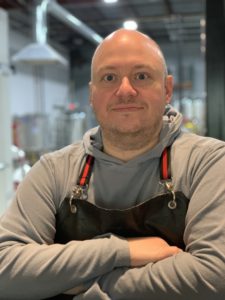
After a stint living abroad in Japan, Todd returned to the States and was unable to find the range of sakes he enjoyed in Japan. This led him on an adventure to brew sake – first as a home brewer and then professionally. Since May 2022, he is the founder and head brewer of Farthest Star Sake, New England’s only sake brewery and Taproom. Todd’s mission is to brew delicious and accessible sake so that people can experience the adventure of discovering freshly brewed, local sake for themselves. The ancient traditions of Japanese brewing have a modern twist at Farthest Star.
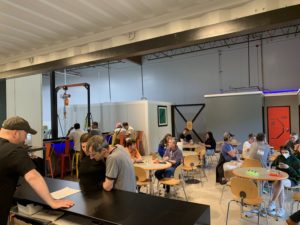
Established in May 2022, the Farthest Star Sake Brewery and Taproom is an outpost of delicious sake in New England. Located outside of Boston in Medfield, Massachusetts, you can experience fresh sake on draft, frequent local food popups and the far out space station vibe in a family friendly space where all are welcome. Sakes served on draft range from the classic Junmai and Nigori, to variants on these standard brews (different rice or unpasteurized), to an ever changing rotation of infused sakes. Infusions feature a spectacular range of ingredients such as Ube purple potatoes, cinnamon, chili and honey, just to name a few.
Discover more about Farthest Star Sake:
Farthest Star Sake Website: https://www.fartheststarsake.com/
Farthest Star Sake Instagram: https://www.instagram.com/fartheststarsake/
Farthest Star Sake Twitter: https://twitter.com/farthestsake
Farthest Star Sake Facebook: https://www.facebook.com/fartheststarsake
Farthest Star Sake Tik Tok: https://www.tiktok.com/@farthest.star.sake
Taproom Location and Hours:
120 N Meadows Rd Medfield MA 02052
Taproom – THUR 4-8 / FRI 5-9 / SAT 2-9 / SUN 2-6
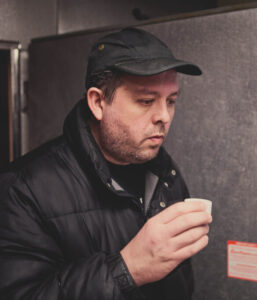
Blake Richardson is the Toji and owner of Moto-i in Minneapolis, Minnesota. Moto-i opened as a sake brewery and brewpub in 2008. Blake has been an industry leader for years and helped sake brewers across America when he founded Minnesota Rice and Milling, which for many years was the only source for polished sake rice in the United States.
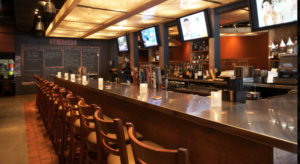
moto-i, the premier izakaya restaurant located in the heart of the Lyn-Lake neighborhood in Minneapolis, MN. Our authentic Japanese restaurant is proud to be the first sake brew pub outside of Japan, and we take great pride in our hand-crafted, authentic sake. Moto-i is an izakaya restaurant featuring Tokyo-style ramen noodles, house-made steamed buns, and rotating seasonal specials. Our menu includes a wide selection of sake cocktails, sake flights, and a variety of Japanese whiskeys and beers. Come for the best ramen in Minneapolis, stay for the amazing atmosphere, friendly staff, and truly one-of-a-kind experience our authentic Japanese restaurant offers.
Discover more about Farthest Star Sake:
Moto-i Website: https://www.moto-i.com/
Moto-i Instagram: https://www.instagram.com/motoisake/
Moto-i Twitter: https://twitter.com/motoisake
Moto-i Facebook: https://www.facebook.com/motoisake/
Taproom Location:
2940 Lyndale Ave S, Minneapolis, MN 55408
Sake Brewers Association of North America
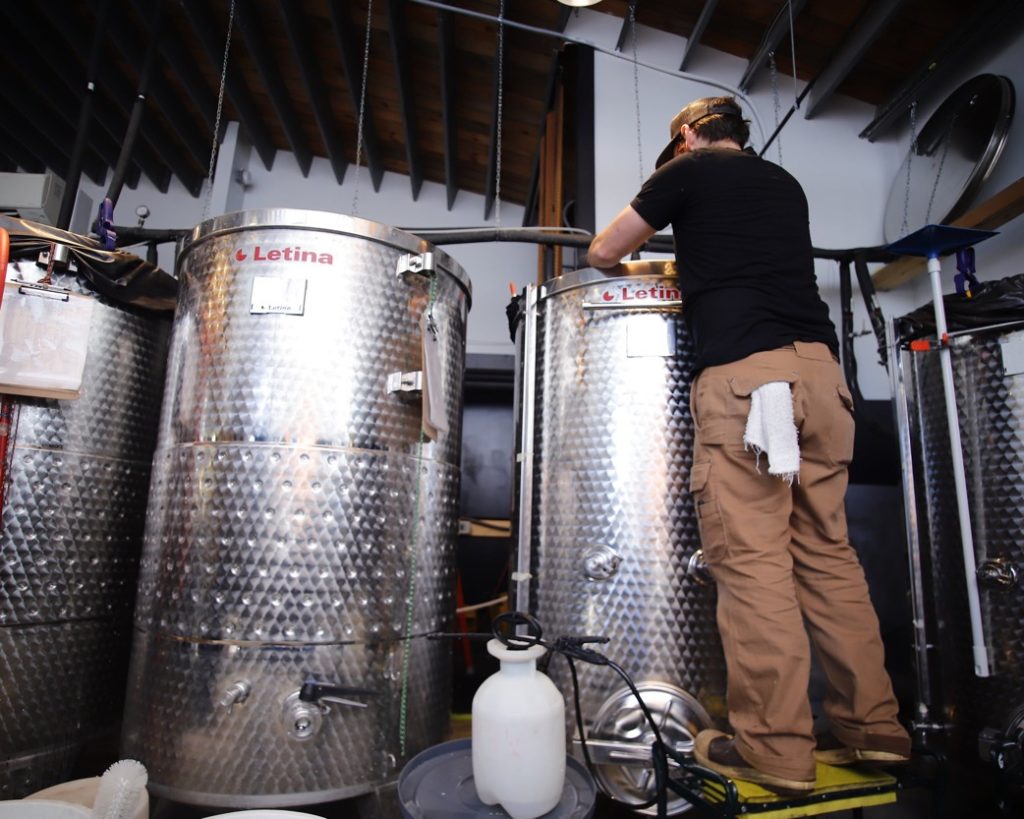
Consumer Development
The majority of consumers are still unfamiliar with sake as a category. To address this the Association engages in broad external communication initiatives.
Brewery Development
We are the ‘voice’ for the North American sake industry. We focus on a wide spectrum of initiatives
Legislative Reform
At this time the legislative landscape is extremely confusing for the sake industry. At the federal level, under the Internal Revenue Code, for matters relating to production and tax, sake is treated as beer. However, under the Federal Alcohol Administration Act, for labeling and advertising, sake is treated as wine. This confusion only deepens at the state level.
Web: https://sakeassociation.org/
Facebook: https://www.facebook.com/SakeAssociation
Instagram: https://www.instagram.com/sakeassociation
Twitter: https://twitter.com/sakeassn
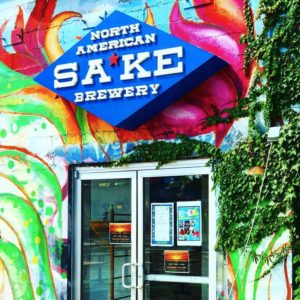
About North American Sake Brewery
The North American Sake Brewery was officially founded in 2016 by Jeremy Goldstein and Andrew Centofante, but their story begins many years prior to that. Andrew was working for Semester at Sea, which allowed him to travel all over the world. He had many stops in Japan and discovered an immediate reverence for Japanese culture. Jeremy was a film producer, and while filming a documentary in Asia, he grew very fond of Japanese people, their food, and the country’s incredibly rich history.
But it wasn’t until 2014, while on a trip for a film project in Los Angeles, Jeremy was exposed to truly great Japanese sake. In the past, he had experienced warmed sake at American sushi restaurants, but this was an altogether different and illuminating occasion. A professional Sake Sommelier guided a tasting with several fresh, cold sakes that would forever change his life. When Jeremy returned to Charlottesville, he ran into his friend Andrew and told him about his sake experience. Andrew jumped at the chance to find great sake again and the two began enjoying sake together, finding special bottles of delicious, umami-rich sakes.
One night after a few too many glasses (or bottles, really) of sake, Andrew asked the fateful question: Do you think we could try making a homebrew batch?
It wasn’t long after that night that Andrew fermented his first batch which led to converted his basement into a full-time sake brewing operation. He and Jeremy would travel to Japan and the USA, visiting other sake brewers, learning the craft, becoming certified as Sake Professionals, and bringing their sake to many private parties & tastings around their hometown of Charlottesville, VA.
A few years later on August 25th, 2018, the North American Sake Brewery would have its grand opening at their current space in the IX Art Park. Andrew continues his passion for sake as the Head Brewer, while Jeremy takes the leadership role on the business end. Together, they continue to spread the gospel of great craft sake, and look forward to many years of pushing the boundaries of their industry.
Skip to: 25:19 Show Closing
This is it! Join us next time for another episode of Sake Revolution!
Support us on Patreon
 Now there is a new way to support Sake Revolution. Join us on Patreon! Patreon is an online platform that allows you to support your favorite creators by subscribing to a monthly membership. At Sake Revolution, we’re offering two tiers, each with its own perk. If you enjoy our sake podcast, if you are able, please consider supporting this labor of sake love! See below to learn about our Patreon support levels.
Now there is a new way to support Sake Revolution. Join us on Patreon! Patreon is an online platform that allows you to support your favorite creators by subscribing to a monthly membership. At Sake Revolution, we’re offering two tiers, each with its own perk. If you enjoy our sake podcast, if you are able, please consider supporting this labor of sake love! See below to learn about our Patreon support levels.
-
Sake Enthusiast
Have you ever wanted to sip along with us as we taste our sakes on the podcast? Now you can! As a Sake Enthusiast patron, you’ll get the inside track and know in advance which sakes we’ll be featuring on the show. This allows you to get them on hand and sip along with us while you listen.
-
Sake Otaku
As a Sake Otaku supporter of the pod, you’ll get access to all the Sake Enthusiast intel along with access to a monthly live zoom Sake Happy Hour taking place the first Weds of every month at 9pm ET (6pm PT). Visit with us live on zoom! Come with all your questions and suggestions and enjoy a relaxed and fun Happy Hour with with us as we all sip sake together!
Episode 152 Transcript
John Puma: 0:21
Hello everybody and welcome to Sake Revolution. This is America’s First Sake podcast, and I’m your host, John Puma. from the Sake Notes, also the administrator at the Internet Sake Discord. Shout out to everybody over here who’s from that place and, Also Reddit’s our slash sake community, helpful place to learn about sake.
Timothy Sullivan: 0:41
And I am your host, Timothy Sullivan. I’m a Sake Samurai. I’m a sake educator, and I’m the founder of the Urban Sake website. And every week John and I are here tasting and chatting about all things sake and doing our best to make it fun and easy to understand.
John Puma: 0:57
Tim, I don’t know if you’re aware of this, but we’re on a stage right now
Timothy Sullivan: 1:00
Oh my gosh,
John Puma: 1:01
Yes. Uh, there’s people, they’re looking, they’re, they’re waving sometimes. It’s interesting. And so right now we are at the, 2023 American Craft Sake Festival, and I would not have this go any other way. This, this is the best way to do a live podcast at a a Sake festival.
Timothy Sullivan: 1:17
Yes, and I am so happy we took the show on the road for this event. For those of you who don’t know about Sake Revolution, we are a weekly podcast, or what should we say, weekly ish.
John Puma: 1:28
We try
Timothy Sullivan: 1:29
Ish Sake podcast, we are for people who are getting into sake, wanna learn about sake, we do a tasting each and every episode, and we have wonderful guests from the SAKE community and we are so excited to be here today at the American Craft Sake Festival. How is everyone enjoying the show so far? Alright. I’m sure that got picked up on
John Puma: 1:53
I think so. I hope so. I hope so.
Timothy Sullivan: 1:55
Uh,
John Puma: 1:56
Uh, the Taiko drums definitely got picked up, but I think that also got picked up. So Timothy, I also have noticed that we at our table here have two esteemed guests with us.
Timothy Sullivan: 2:05
Yes. two American sake brewers who have agreed perhaps against their will, but they agreed to be our guests and join our sake roundtable today. So I would ask both of our brewers to introduce themselves.
Todd Bellomy: 2:21
Hi everybody, I’m Todd Bellomy. I’m the owner and head brewer at Farthest Star Sake. We are the only sake brewery and taproom in New England. So we’re located in Massachusetts and uh, we’re super psyched to be here, even though it was a lot of driving.
John Puma: 2:39
You drove all the way. Oh my goodness.
Todd Bellomy: 2:42
And driving back tomorrow
John Puma: 2:45
And our other guest.
Blake Richardson: 2:46
Uh, my name is Blake Richardson. I’m the owner of Moto-i Sake Brewery in Minneapolis, Minnesota.
John Puma: 2:52
Nice. So we’ve kind of got like a North American Sake Brewery that’s been around for a long time and we’ve got a brewery that is kind of brand new. You guys are still, uh, you guys only been doing this for how long, Todd? When did you guys open up?
Todd Bellomy: 3:04
14 months ago. Not that I’m counting.
Timothy Sullivan: 3:07
that
John Puma: 3:07
you’re counting 14 months in the Sake world is still pretty brand new to me. I don’t know. Tim, what do you think?
Timothy Sullivan: 3:12
I think that sounds, uh, amazing.
John Puma: 3:16
And, and moto-i, how long has moto-i we been brewing sake? That’ll
Blake Richardson: 3:19
be It’ll be 15 years in october
John Puma: 3:20
Oh my goodness. So more years than he’s had months.
Blake Richardson: 3:22
months. Yeah. Okay.
Todd Bellomy: 3:23
Okay. Correct.
Timothy Sullivan: 3:25
Wonderful. So we’re at the American Craft Sake Festival in Charlottesville, Virginia. And tell me about the sakes that both of you brought today.
Blake Richardson: 3:37
Uh, we brought two sakes. one Junmai Ginjo and one Jun Mai. the Junmai is made with Achi. mil to 70%. The Jma g jo is made with, Yama Nichi mil to 57%. They are drastically different. One is, uh, has a really nice fruit acidity. and the, the other, the Jma g jo is very soft and delicate. They’re quite the contrast with, each other.
John Puma: 4:02
Nice, nice. And uh, and Todd, what did you guys bring over?
Todd Bellomy: 4:05
I was told to bring two sakes, so I brought three sake. Um, and so we have our flagship, uh, filtered sake in a Strange Land, which the three of us drank online recently. Um, and so Hard Water, two yeast strains, 9 0 1 and 1601, uh, and Yamadanishiki 70, which is our House Rice. And then we brought our sake for the summer, which normally is only served on a tap room. Uh, it is a sparkling sake. 16% alcohol, Yamadanishiki 70. A Ginjo yeast from Northern Japan. And as a bonus, third sake, we brought a ginjo style sake with Yamadanishiki, uh, with fresh cucumbers, uh, from a farm near the brewery and lime zest. We also have our brewing water on draft, if anyone’s thirsty.
John Puma: 4:58
Yeah. And then, uh, please note that Todd did say on draft, you brought kegs and taps with you.
Todd Bellomy: 5:04
Correct. If you drive 620 miles, you can bring whatever you want. So I brought, I brought the most efficient packaging, uh, which is kegs.
John Puma: 5:13
Excellent, excellent. So if you guys have not gotten over to the farther star table and you wanna have some draft sake, that’s a great way to experience it. Uh, now Blake, you, you guys flew right? Okay, good. And, uh, and you guys brought bottles
Blake Richardson: 5:27
we brought bottles. Yeah, no pressurized vessels allowed on the plane, kegs included.
John Puma: 5:32
And then that’s interesting because if you go to Moto-i, you’ll probably have your sake on draft, so you’re getting a slightly different, but equally interesting experience coming down here to, uh, to the festival.
Blake Richardson: 5:41
Indeed. we do bottle because of the, the customer base that wants to take it home. That’s how they, that’s how they enjoy the sake to go. yeah.
Timothy Sullivan: 5:49
yeah. No, you have both been active in the sake industry for many, many years. I’d love to ask you, what are some of the biggest changes you’ve seen in the American sake industry over the last 15 years or so?
Todd Bellomy: 6:03
Oh, that’s an interesting question. uh, I think some of the good things I’ve seen is, uh, more people willing to kind of take the leap and open a sake brewery. Uh, getting into the, i, I come from the beer world, the beer brewing world, and getting into the brewery industry is not easy. I don’t care what you’re doing. And so I’ve seen a few more people willing to take the leap and make sake, which is pretty great. Uh, and more availability to high quality rice is really the biggest. Change I’ve seen, I think, but I’ve only been at it for not even half as long as Blake. So,
Blake Richardson: 6:40
You know, one thing I that’s interesting, non brewery related is customer side, customers understanding the terms of sake, what Junmai means, um, what seimaibuai I means. Um, as people grow with the industry from a customer facing side, and they understand these terms and they ask for, Um, your product in relation to those terms. That’s a, that’s a real eye-opener. It still happens to this day, and it’s great when you, you come in contact with that customer who’s actually taking the time to research and understand and appreciate the product, not just from the moment it hits the lips, but like, what goes into this product? What is it all about? That’s, that’s something that’s changed dramatically in, in the, the years that I’ve been involved.
John Puma: 7:24
from Todd’s side, the, the availability of rice and the, the ability to make sake and then, and people out there doing it. And, uh, for you more like the, the, when you have your consumers coming in, they kind of know a little bit more about what they’re getting into.
Blake Richardson: 7:36
Yeah, absolutely. Yeah.
Timothy Sullivan: 7:38
Now for people who are visiting the festival today and walking around and enjoying the sake from your point of view, as one of the people pouring sake. What would you want them to know? What types of things should they look out for when they’re tasting sake from various vendors? What would you want them to know as they go around and enjoy their sake today?
John Puma: 7:57
I think, Tim, that that was a tough one. That was a,
Blake Richardson: 8:00
It’s, it’s a, a rush of thoughts.
John Puma: 8:02
Yeah. No, I, I imagine that’s like a, like an hour long, uh, conversation.
Blake Richardson: 8:08
I think the, the level of commitment it takes to make sake would be great if everyone knew what that is.’cause it’s, it’s, it’s hard to describe and it’s beyond the scope of, of a, of a small conversation. Mm-hmm. It takes a dramatic commitment to make sake make it at all. That’ll make it well,
Timothy Sullivan: 8:30
So the craftsmanship that goes into making sake, having an appreciation for that?
Blake Richardson: 8:34
Mm, for sure. Yeah.
John Puma: 8:37
Uh, and Todd,
Todd Bellomy: 8:38
I think I’ve so far talked to a lot of people with this mindset, but the mindset has to be, you’re just open to learning new things. And so all of the brewers here have. Sort of a thing that they’re telling people, right? It’s made with hard water or soft water, or this yeast, or that yeast. And so to start to take note of those things, uh, I think is pretty cool. Um, and also i, I would love people to see sake in this setting, uh, because a lot of times sake is relegated to a wine glass thing or a sushi dinner, and you’re like, no, you could also have a festival and be under a tent. And just chill out and have sake. You know, it’s a, it’s a beverage that should factor into your daily or not weekly enjoyment of alcohol. So,
John Puma: 9:26
daily. Daily’s. Okay, daily’s. Okay.
Todd Bellomy: 9:29
sorry, I’m a brewer so daily, you know what I mean?
John Puma: 9:33
um, I, I have to say this is like the first time I’ve ever been to a festival like this. In, in America, like Japan, you can kind of find festivals where brewers are gonna be pouring their stuff, but I’ve never seen something like this in the us And so for me as a, as a sake and Enjoyer, enjoyer, yeah, a sake enjoyer and consumer, uh, this is exciting and it’s like a lot of fun, uh, and, and, and is a little bit unique. Uh, so that’s been exciting for me personally. Tim.
Timothy Sullivan: 9:58
Yeah, absolutely. This has been so much fun and I think the more this type of community event happens, the more people are going to be exposed. One thing we talk about on the podcast a lot is people having their aha moment with sake. That moment when you meet the sake that really speaks to you, and then sake becomes your hobby, and then perhaps your obsession. Did that experience happen to both of you as well? That aha moment with sake.
Blake Richardson: 10:25
Actually many times. Many times. Yeah. And I do mean that, like when I first had it, I had that moment, but even subsequent to that, when I started drinking sake with multiple different foods and you know, having a sake that went well with a pizza, that was an aha moment. Like, wow, this is so versatile. And leading up to that moment, I just didn’t think in those terms. Wasn’t, it wasn’t like I was opposed to it, but the moment it happened, I’m like, wow. So many times. Yeah.
John Puma: 10:53
Alright. Okay.
Todd Bellomy: 10:56
My aha moment with sake. It was an interesting thing when I first moved to Japan. We drank some sake on the first night that I was there and it was super delicious. It was like more complex. I only had like really crappy American sake or you know, not any of us that are here, but like mass produced sake. And I was like, eh. And then the first night we drank sake out of a coffee mug. I was in the middle of nowhere in Japan, so we drank this co. The sake was really complex and. I had this thought that I was like, oh, maybe they broke out a special bottle of sake for me, or maybe it was like a celebratory thing. And then over the next year I came to learn that no, it all tasted like that. It was all complex with heavy fruit layers and cucumber and black pepper and that kind of, yeah. So that sake, by the way I’ve learned years later is, um, Otokoyama Junmai Ginjo was the sake we had. Yeah. Which in Japan at the time was like, I don’t know,$10 a bottle. It was real cheap. Yeah.
John Puma: 12:03
That’s awesome. And, uh, so by the way, Tim, we need to add, uh, to our vessel series the coffee mug Yes. Episode. So we will definitely do that.
Todd Bellomy: 12:12
Yeah. And the countryside of Japan, it’s you drink sake of anything that holds liquid.
Timothy Sullivan: 12:16
Yeah, for sure. Now we have some aspiring home brewers who listen to our podcast. We may have some aspiring home brewers here in the audience today.
John Puma: 12:28
I think I recognize one or
Timothy Sullivan: 12:29
Yeah, I see a
John Puma: 12:30
three or four or five.
Todd Bellomy: 12:31
A couple.
Timothy Sullivan: 12:32
So as established tojis, as established master brewers yourself, what would you wanna have told your younger self when you were first getting into sake? Any advice for people who are getting into sake brewing today? Don’t do it.
Todd Bellomy: 12:50
Get a job in an office.
Blake Richardson: 12:54
Take as much data that you can. It’s all data driven. data collection. Yeah. Get as much data
Timothy Sullivan: 13:03
Why, why do you say that
Blake Richardson: 13:06
over time it’ll tell you a story about what you’ve done and it’s hard to recollect what you’ve done. When you’re drinking a sake that’s one, two years old and you’re like, this is perfect. You need to go back and look at what you did. What was the, the water ratio, what was the soak time? What was the. I mean, all the, those things mean so much to, to your future brewer self that you just, you can’t discount the value of good data.
Timothy Sullivan: 13:32
Okay.
John Puma: 13:32
Mm mm
Timothy Sullivan: 13:34
And how about for you? I
Todd Bellomy: 13:36
I’m sorry. I have a two part answer. Okay. Uh, part one would be for people who want to be home brewers. The whole thing about following the three step edition things that commercial brewer’s doing. Are not necessary in home brewing. You can literally throw rice and koji and yeast and water in a bucket and make sake. Um, you’re pitching so much more yeast than is required for a 20 liter bucket. So you can do like two additions or whatever. It doesn’t matter. Also, uh, for home brewers out there, um, you know, it’s rice, koji water, lactic acid yeast. Right? I don’t know other people experimenting with grains and all that stuff. Just try to make sake that tastes like sake would be my thing.
John Puma: 14:18
Mm-hmm.
Todd Bellomy: 14:19
Uh, don’t experiment with growing Koji on popcorn or making sake outta corn or whatever.’cause some people get into, I, I, listen, I’m a beer home brewer going back decades. I love beer home brewing. But, there’s an experimentation element. Just let’s try to make sake and get people to understand what sake really tastes like.
Timothy Sullivan: 14:37
Do you think learning to brew beer as a first step is worthwhile, or should you just dive into sake if that’s what you love? I
Todd Bellomy: 14:43
I mean, I think learning to brew anything from kombucha to beer to sake, to mead, to wine, to whatever teaches you, you, you know, everything has to be clean and sterile. It teaches you good scientific method, which is really important. And so learning how to do any of that would be applicable to sake, of course. Yeah.
Timothy Sullivan: 15:04
That’s awesome. That’s really, really good advice. I would not have thought that data collection would be one of the keys to becoming a, an excellent home brewer, but that, that’s really good advice. I really appreciate that.
John Puma: 15:16
Yeah. And then of course we’ve got the, put some rice in a bucket, which I am kind of like I can, I have a bucket.
Todd Bellomy: 15:22
So I left, I left my old blog up, uh, even though I don’t use it anymore. BostonSake.com. There is a lovely video about how to make a two day. Batch of sake in a bucket.
John Puma: 15:33
mm. excellent.
Timothy Sullivan: 15:35
Yeah. Now we’ve talked a little about the past and a little bit about becoming a home brewer now. What do you think the future holds for the American craft sake industry? Can I ask you to look in your crystal ball a little bit and see where we might be in five or 10 years? What type of innovations or changes do you think might come to the US sake industry in particular?
Todd Bellomy: 15:56
I think sake will go in a much like a very similar path to craft beer. And so I think that sake will take root here. Hopefully we will increase the quality overall of everyone’s sake, which is something the craft beer industry went through in the nineties. Mm-hmm. And then Americans will take it in a path that, no, you know, Japanese people never saw coming. Right. I mean, flavored sake, wild yeasted sake, sake, with, you know, American grown rice, whatever, it’ll go in a path that no one sees coming. So the same exact thing happened with beer. I mean, if you told me 20 years ago, then everybody was gonna drink fruity, hoppy beers that tasted like orange juice, I would never believe you. Uh, but. It’s Americans have taken beer and gone their own direction, and so the same will happen with sake. Some of the stuff that comes out will be cool, some won’t be cool, but it won’t last. It’s a self-limiting process. Yeah,
John Puma: 16:58
So you see strong parallels in like the way, craft beer has developed in the US to the way it looks like sake, a craft sake is gonna be
Todd Bellomy: 17:05
abso Absolutely. Yeah. Yeah, yeah. And you get similar people who are starting breweries, home brew people, or like people who are interested in science. Those are the same people who started the craft beer industry, which we all enjoy today. That,
Timothy Sullivan: 17:17
Blake, any thoughts on the future?
Blake Richardson: 17:19
Yeah, I think one, one easy prediction to make is there’ll be a sake brewery in every N F L town in America before 2030. And that’s what I think about 20% True already. And two, in some. So even in, uh, New York, you have one for each team in New York. Um, that’s true.
John Puma: 17:36
And,
Blake Richardson: 17:37
but I think sake in similar fashion to craft beer, uh, wine, and even say coffee. As that took off, you know, Starbucks has replaced Maxwell House or Folgers and ernest and Julio was replaced by Jordan. And, you know, the beer industry, the thing the, the difference between those industries when they went craft, if you will, they went popular, they went quality. The sake industry wasn’t here in that sense prior to what’s happening right now. So I think the, the runway is a bit longer. It will happen. But it’s just gonna take a little bit more time.’cause the base isn’t already established in
John Puma: 18:17
Mm-hmm. Mm-hmm. Mm-hmm.
Blake Richardson: 18:18
But America does love craft, they love quality. And this, this is the same story, just needs a little more time.
John Puma: 18:26
Nice. so Tim, you’ve, Commented many times in the show about how you’re, you know, the, the dream is, is for sake to become a world beverage. And so I think like things like this kind of get us a little step closer to that and like seeing where things are going be like, all right, now in X number of years, we can look to, uh, the US bringing a little bit of that flavor to, to sake.
Timothy Sullivan: 18:46
Yeah. I think I’ve heard from a lot of Japanese sake brewers that they have a vision that sake will become a world beverage. Enjoyed around the world, produced around the world, and they don’t see the emerging American craft sake industry as competitors necessarily, because there’s so much room for market growth for everybody that sake can be enjoyed around the world, and I think that they would actually encourage what’s happening here today. Mm-hmm. Yeah.
Blake Richardson: 19:17
Yep.
Timothy Sullivan: 19:18
Yeah,
Todd Bellomy: 19:19
Yeah. That’s basically the feedback I get from Japan is rising tide floats all boats. Right? I mean, the better we do, all of these people in here are gonna go, oh, I guess I like sake.
Timothy Sullivan: 19:31
Yeah.
Todd Bellomy: 19:32
know, I’ve only had it at a hibachi restaurant and it was terrible, so this is great. You know? And then they’ll go out and seek not only us, but. Japanese sake as well.
John Puma: 19:42
Yeah,
Timothy Sullivan: 19:43
for sure. Yeah. So when it comes to making sake a world beverage, one thing that I think plays a huge role is food pairings and sake. And I’d like to ask both of you, since this is something I think we need to promote, what are some of your favorite non-traditional or non-Japanese food pairings, with your sake or any sake that you like? Because we have to get the word out about drinking sake with non-Japanese food. I think. So. What do you think?
Blake Richardson: 20:16
So as you were asking about those aha moments, another aha moment was a pairing of. Onikoroshi Daiginjo with, uh, a tenderloin and mushroom saute. It was absolutely incredible. That was, and that’s speaks to what you’re talking about. Who would’ve thought that I wouldn’t have, but I was introduced to this by a local, uh, Japanese restaurant owner. He said, this is the perfect pairing, trust me, and I got it. And he was absolutely right. So it’s cri that that element of pairing food with sake. That’s non-Japanese is critical to the growth, I think. Yeah.
Timothy Sullivan: 20:52
Yeah.
John Puma: 20:54
Todd?
Todd Bellomy: 20:55
so for me, pairing really has a lot to do with, uh, a vibe that I used to feel in Japan. So when I lived in Japan, I went to izakaya, which are like pubs basically, and the food is all very accessible, grilled, fried, you know, that kind of thing. And so what I try to do is recreate that vibe in New England with local products. You know, so izakayas don’t really exist in America. So, uh, you know, Mountains on the moon, nigori sake with a lobster roll is amazing, right? So we try to just pick things that are really great in our market. Lobster rolls, obviously a lot of seafood. Um, we actually had an oyster popup one time and we gave them a spray bottle of sake so they would shuck an oyster, spritz it with our sake and give it to the customer. And so things like that are really informs what we do.
Timothy Sullivan: 21:51
That’s great. And that really ties in with the idea of local, like, Local is so important, ties in with craft products and if, if your local cuisine there in Boston is lobster roll and you’re a local nigori, that sounds like an awesome pairing.
Todd Bellomy: 22:08
Yeah, absolutely. I mean, the big thing is to take sort of a, a big step in sake becoming a world beverage is. Taking the step to where, um, a sake is just a share of a basket, right? Somebody goes into a liquor store. No. In my market at least no one goes into a liquor store to specifically buy sake. So you’re in there and you have a basket and you go, I need some newing on i p a and some seltzer and a bottle of wine. I want them to go. I’ll take two of these, huck it in the basket. That’s really the mission for me.
John Puma: 22:42
Yeah. And, and so for you, you actually, a lot of you, your sales are,, you have small, a small form factor, and then you sell it out to local places around the Massachusetts area, the greater Boston area.
Todd Bellomy: 22:53
Yeah. Correct. So that even the packaging size was informed by that same idea. So we only do single serve Japanese cups and cans sell really well in the U.S.
John Puma: 23:03
Mm-hmm. Mm-hmm. Uh,
Todd Bellomy: 23:04
and so at least in our market, no one’s buying large bottles. And so we did, uh, an American made bottle. It’s actually made here in Virginia at the OI plant, and then we buy it from them. And, uh, it’s single serve.
John Puma: 23:17
Um, so from top to bottom, everything that you do is kind of focused on the market that you’re in. So the, the things you’re pairing with, which, which will inform the flavor of the sake and also even the serving size.
Todd Bellomy: 23:27
Absolutely. I, everything’s, informed by, let’s. Do a lot of local food pairing, but also accessibility is the big thing. So someone like Blake, he has a brew hub, people come to him. It’s accessible for us, where we’re a packaging brewery. Small form factor really makes it accessible to everybody.
John Puma: 23:45
Nice. And, uh, Blake, since you do have a, a brew pub and you, sell mostly out of there, does the kitchen kind of talk to the Brewing team and kind of like figure out like, oh wait, we, we, we found out that this dish will go really well with this sake, or something like that?
Blake Richardson: 23:58
that? used to be how it was. Okay. Yeah. And now our menu is relatively static. We’d say maybe 80%. Mm-hmm. And now we make sake around what it already exists. Okay. Yeah.
John Puma: 24:14
So sometimes when you’re putting something together, you have a, maybe have a dish in mind to, uh, to pair it with.
Blake Richardson: 24:18
Mm-hmm. Absolutely.
John Puma: 24:19
That sounds like I’m getting hungry. I don’t know about the rest of you.
Blake Richardson: 24:22
Yeah.
John Puma: 24:23
Well, let’s talk a pairings. I’m like, okay, I’ve had a lot of sake. I haven’t had any food
Blake Richardson: 24:26
Mm-hmm. Mm-hmm.
Timothy Sullivan: 24:28
All right. Well, I wanna take a moment and just say thank you to Blake Richardson from Moto-i in Minneapolis, and also Todd Bellomy from Farthest Star Sake Brewery in the Boston area. Thank you so much for joining our sake Brewer round table. It was a pleasure to have both of you on the podcast today.
Blake Richardson: 24:47
Thanks. for having us.
Todd Bellomy: 24:48
Thanks. I appreciate it.
John Puma: 24:49
and I want to thank everybody for coming over here and, uh, watching us do our little, our little show here. Thank you so much. We really appreciate it. And, if it’s not too much trouble, I’d like to get a photo of y’all. So I’m gonna do that. Stand up. Stand up.
Timothy Sullivan: 25:06
It’s happening.
John Puma: 25:08
Thank you. Thank you. And now, uh, everybody say, Sake, revolution on the count of three. 1, 2, 3 Sake revolution. Thank you. That was
Todd Bellomy: 25:19
You
Timothy Sullivan: 25:19
And we also wanna give a special thank you to North American Sake Brewery, the hosts for today. Thank you so much. And also a special thank you to the Sake Brewers Association of North America, who also helped organize today’s festival in Charlottesville, Virginia. Yes.
John Puma: 25:38
Yes. That is the place, correct.
Timothy Sullivan: 25:40
alright. Thank you all so much.
John Puma: 25:43
Thank you for all coming. Thank you for coming and have a great day.
Todd Bellomy: 25:46
drink Good sake.